Are you tired of your child’s rude behavior and lack of manners? How do you feel when they forget to say “thank you” or interrupt conversations without any regard for others?
As a parent, you undoubtedly want your child to grow up with good manners and essential etiquette skills, but where do you begin? Teaching good manners for kids is not just about appearances; it’s about cultivating empathy, respect, and social awareness.
In this guide, we will explore the importance of instilling manners in children, share essential etiquette tips, and help you navigate the rewarding journey of raising well-mannered and considerate individuals.
Table of contents
Introduction
Good manners for kids is a topic for discussion for today’s generation, who knows about all fields, whether politics, science for kids, history, technology, etc. All this information in a small package may sometimes create a hassle in conveying the knowledge you can solve this problem by building a proper manner towards others.
When you speak well, you gain well. Nowadays, parents must focus on raising well-behaved kids as they want their children to know all the latest things about the world.
They must be the best in all the extra curriculum fields apart from their studies, but for polishing them, a vital aspect is building their character that one can reflect on. Good manners for kids make them grow their inner personality and tell them how to portray themselves in society.

Why Good Manners Matter
Good manners play a vital role in shaping a child’s personal relationships, social interactions, and future success. In personal relationships, good habits for kids manners foster respect, empathy, and kindness. By teaching children to say “please” and “thank you,” to apologize when they make mistakes, and to listen attentively, we equip them with the tools to build strong and meaningful connections with others.
In social interactions, good manners enhance a child’s ability to navigate different social settings with ease and grace. By teaching them to greet others politely, introduce themselves, and engage in conversations respectfully, we empower them to feel comfortable in unfamiliar environments and make positive impressions on others.
Furthermore, good manners contribute to a child’s future success. Employers and educational institutions highly value individuals who demonstrate good manners and proper etiquette. Polite and well-mannered individuals stand out in job interviews, networking events, and professional settings, as they exude professionalism, respect, and social competence.
If you are polite toward others, everyone will remember you in the future. Being polite does not mean you need to follow or listen to everyone and do their work; we should know how to say yes or no to people correctly. To build a better future, either in your personal or professional life, you should know to figure out the right things for you by not harming others.
In all, instilling good manners in children extends beyond mere etiquette. It lays the foundation for healthy personal relationships, fosters positive social interactions, and paves the way for future success in both personal and professional endeavors.
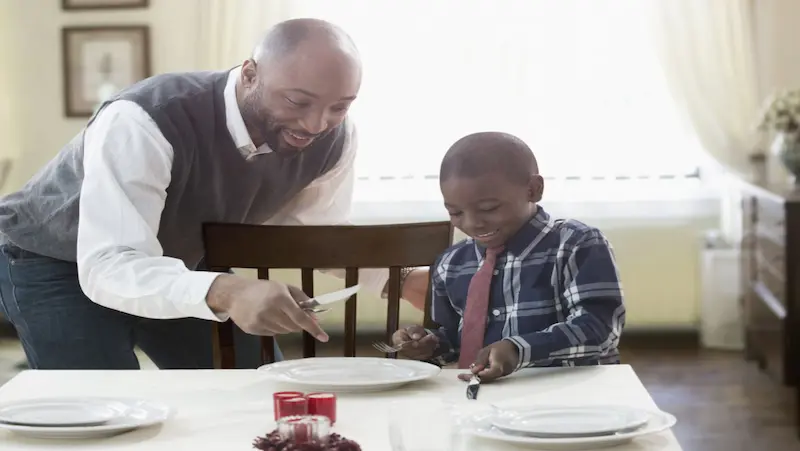
Essential Manners to Teach
Here are a selection of key manners that are important for children to learn:
1. Saying “please” and “thank you”: Teaching children to use these simple phrases demonstrates gratitude and respect for others. It shows appreciation for acts of kindness and helps develop empathy.
2. Being respectful: Children should learn to respect others’ personal space, opinions, and belongings. Teaching them to use polite language, listen actively, and avoid interrupting fosters respectful communication.
3. Practicing good hygiene: Teaching children to cover their mouth when coughing or sneezing, washing hands regularly, and using tissues or handkerchiefs helps promote good hygiene habits and consideration for others’ health.
4. Sharing and taking turns: Encouraging children to share toys, take turns during board games for kids, and be considerate of others’ needs promotes cooperation, empathy, and the ability to play well with others.
5. Table manners: Teaching children basic table manners such as sitting properly, using utensils correctly, chewing with their mouths closed, and not interrupting or talking with food in their mouths cultivates good dining etiquette and respect for mealtime traditions.
6. Greeting and introducing others: Children should learn how to greet others politely by making eye contact, using a firm handshake (if appropriate), and introducing themselves confidently. This skill helps them make positive first impressions and build connections.
7. Apologizing and forgiving: Teaching children to apologize when they make mistakes or hurt someone’s feelings is essential for developing empathy and taking responsibility for their actions. Equally important is teaching them to forgive others and accept apologies graciously.
8. Being a good listener: Encouraging children to listen attentively when others are speaking, maintaining eye contact, and refraining from interrupting demonstrates respect and fosters effective communication skills.
9. Showing gratitude: Teaching children to express gratitude beyond just saying “thank you” by writing thank-you notes or performing acts of kindness encourages them to appreciate and acknowledge the efforts of others.
10. Being a helpful and considerate individual: Instilling values of kindness, empathy, and helpfulness in children helps them understand the importance of being considerate and supportive of others in various situations.
By teaching these key manners, children develop the social skills, empathy, and consideration necessary to thrive in personal relationships, navigate social settings with confidence, and contribute positively to their communities.
Learn more about lego robotics for kids.

Strategies for Teaching Manners to Childrens
To effectively teach good manners to children, here are some practical tips and techniques for parents:
1. Lead by example: Children learn by observing their parents and caregivers. Model good manners consistently in your own behavior, such as saying “please” and “thank you,” practicing active listening, and being respectful in your interactions with others.
2. Consistent reinforcement: Set clear expectations for good manners and consistently reinforce them. Establish rules and guidelines for behavior, and provide gentle reminders when manners are forgotten. Consistency helps children understand that good manners are expected at all times, not just occasionally.
3. Positive reinforcement: Acknowledge and praise your child’s efforts when they display good manners. Positive reinforcement can be in the form of verbal praise, a smile, or a small reward. This reinforces the importance of good manners and encourages them to continue practicing them.
4. Use teachable moments: Seize everyday situations as opportunities to teach manners. For example, when your child receives a gift, prompt them to say “thank you” and write a thank-you note. When dining out, explain table manners and encourage them to order politely.
5. Practice role-playing: Engage in role-playing scenarios where you and your child can act out different social interactions. This allows them to practice greetings, introductions, and polite conversation in a safe and supportive environment.
6. Age-appropriate expectations: Adjust your expectations based on your child’s age and development. Younger children may start with basic manners like “please” and “thank you,” while older children can learn more complex etiquette. Introduce new manners gradually and build upon previous lessons.
7. Teach empathy and perspective-taking: Help children understand the impact of their actions on others. Encourage them to consider how their behavior may make someone feel and teach them to be sensitive and caring towards others’ needs and feelings.
8. Use books and resources: Utilize age-appropriate books for kids, videos for kids, and online resources that focus on teaching manners. These can serve as valuable tools to reinforce lessons and make learning about manners more engaging and enjoyable for children.
9. Correcting and explaining: When correcting your child’s behavior, be gentle and explain why certain manners are important. Instead of simply saying, “That’s wrong,” take the time to explain the impact of their behavior and provide alternative ways to handle the situation.
10. Practice patience and repetition: Teaching good manners is an ongoing process that requires patience and repetition. Be patient with your child as they learn and reinforce good manners consistently over time.
By implementing these tips and techniques, parents can effectively teach good manners to their children, fostering a respectful and considerate attitude that will benefit them throughout their lives.

Incorporating Manners into Daily Life
Integrating manners into daily routines and activities for kids helps children understand that good manners are not isolated behaviors, but a consistent way of interacting with others. Here are some suggestions on how to incorporate manners into various situations:
1. Mealtime etiquette:
– Teach your child basic table manners, such as using utensils properly, chewing with their mouth closed, and asking to be excused.
– Encourage them to participate in setting the table and clearing their dishes after meals, promoting a sense of responsibility and gratitude.
– Engage in pleasant conversations during mealtime, emphasizing active listening and taking turns speaking.
2. Playdates:
– Before playdates, discuss expectations for behavior and manners with your child. Explain the importance of sharing, taking turns, and treating guests kindly.
– Encourage your child to greet their playmate and their parents politely when they arrive and say goodbye when it’s time to leave.
– Help your child understand the importance of respecting their friend’s toys and belongings and practicing good sportsmanship during games for kids.
3. Public outings:
– Teach your child how to navigate public spaces respectfully. Encourage them to hold doors open for others, use indoor voices, and not disturb others in libraries, museums, or theaters.
– Teach them to wait patiently in line and to say “excuse me” when they need to get someone’s attention or pass by someone.
– Model good behavior during public outings, such as being polite to service personnel, showing patience, and demonstrating consideration for others.
4. Phone and digital etiquette:
– Teach your child the importance of using polite language and being attentive when speaking to others on the phone or video calls.
– Set guidelines for appropriate use of technology during social interactions, emphasizing the importance of giving others their full attention and not interrupting conversations.
5. Public transportation:
– Teach your child to give up their seat to those who need it more, such as the elderly, pregnant women, or individuals with disabilities.
– Remind them to use a quiet and respectful voice while on public transportation, being mindful of others’ personal space.
6. Thank-you notes and appreciation:
– Encourage your child to write thank-you notes or create handmade cards to express gratitude after receiving gifts or acts of kindness.
– Help them understand the importance of showing appreciation verbally or through small gestures for the help or support they receive from others.
By integrating manners into daily routines and activities, you provide practical opportunities for your child to practice and reinforce good manners consistently, making them an integral part of their social interactions and relationships.
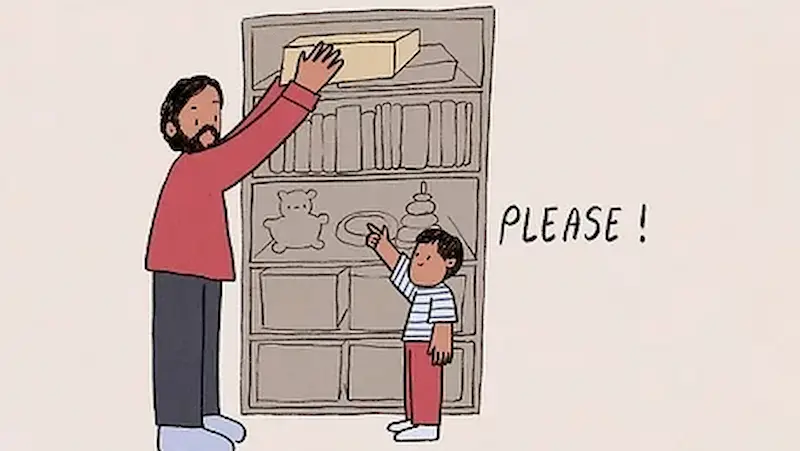
Addressing Challenges and Common Concerns
When teaching good manners, parents may encounter various challenges. Kids are getting inspired to adopt the world they are watching online, and these kids are called Gen-Z kids. Gen-Z kids think that they know more than what parents are structuring to do, which creates inconsistency and resistance to what is being taught by the parents.
To overcome this situation, we need to follow the 1:1 formula, i.e., give and take; if they follow the protocols they will receive a small reward. Here are strategies to overcome common challenges:
1. Resistance:
– Explain the reasons behind good manners: Help your child understand that good manners show respect, make others feel valued, and contribute to positive relationships.
– Make it fun: Use games, role-playing, and rewards to make learning and practicing good manners enjoyable and engaging.
– Be patient: Recognize that change takes time. Remain consistent and provide gentle reminders and guidance, focusing on progress rather than perfection.
2. Inconsistency:
– Set clear expectations: Establish consistent rules and guidelines for behavior and manners. Communicate these expectations to your child so they understand what is expected of them in different situations.
– Provide reminders: Gentle and consistent reminders can help children stay mindful of their manners. Use phrases like “What’s the magic word?” or “Remember your manners” as prompts for appropriate behavior.
– Lead by example: Demonstrate good manners consistently yourself, as children often mirror their parents’ behavior.
3. Handling social situations:
– Pre-teach and practice: Before attending social events or gatherings, discuss and role-play specific manners that will be relevant. Practice greetings, introductions, and polite conversation to boost your child’s confidence.
– Give clear instructions: Provide specific guidance on how to handle different social situations. For example, explain appropriate behavior when visiting someone’s house or attending a formal event.
– Use debriefing sessions: After social events, have brief discussions with your child to reflect on their behavior and manners. Praise their good manners and address any areas that may need improvement.
4. Peer pressure:
– Reinforce values and expectations: Help your child understand that good manners are important, even if others may not prioritize them. Reinforce the values you have established and encourage your child to stay true to them.
– Discuss consequences: Talk to your child about the potential consequences of not demonstrating good manners, such as hurting others’ feelings or damaging relationships.
– Encourage assertiveness: Teach your child how to assertively communicate their needs or discomfort while still maintaining good manners. They can politely decline inappropriate requests or express their opinions respectfully.
5. Continuous reinforcement:
– Provide positive reinforcement: Acknowledge and praise your child when they demonstrate good manners consistently. Celebrate their efforts and progress, reinforcing the importance of good manners.
– Remind and redirect: If your child forgets their manners, gently remind and redirect them. Emphasize the positive behavior you expect, guiding them towards better choices.
Remember, teaching good manners is an ongoing process. Be patient, consistent, and understanding. Celebrate small victories and foster an environment that promotes kindness, respect, and empathy.
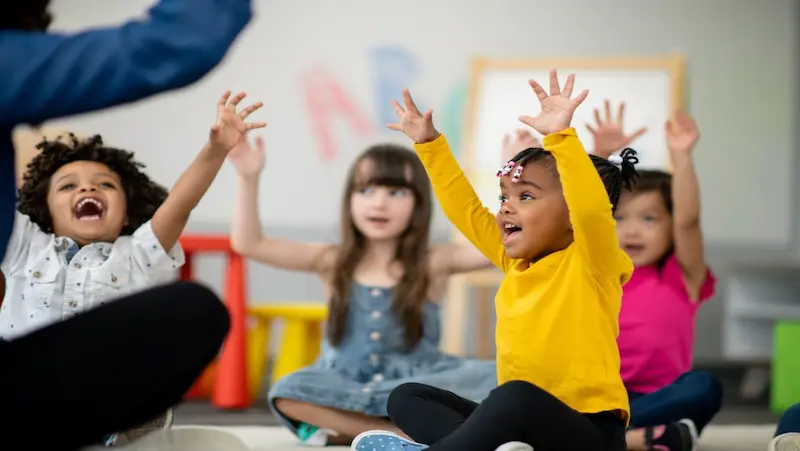
Setting a Positive Environment
Creating a positive and nurturing environment is crucial for fostering good manners in children. Here’s why it’s important and how communication, patience, and understanding play a vital role:
1. Communication:
– Open dialogue: Establish an environment where communication flows freely. Encourage your child to express their thoughts, concerns, and questions about manners without fear of judgment.
– Explain the “why”: Communicate the reasons behind good manners, emphasizing their positive impact on relationships and social interactions. Help your child understand the value of treating others with respect, empathy, and kindness.
– Active listening: Practice active listening when your child shares their thoughts or experiences related to manners. This demonstrates that their perspective is valued and encourages open communication.
2. Patience:
– Learning process: Recognize that learning and internalizing good manners take time. Be patient with your child’s progress, understanding that they may make mistakes along the way.
– Gentle reminders: Instead of becoming frustrated, provide gentle reminders and guidance when your child forgets their manners. Patience and repetition are key to helping them internalize good manners as habitual behaviors.
3. Understanding:
– Individual differences: Understand that each child is unique and may develop manners at their own pace. Some children may struggle with certain aspects of manners while excelling in others. Tailor your guidance and support based on their individual needs.
– Empathy and perspective-taking: Foster empathy by helping your child understand how their manners impact others. Encourage them to consider others’ feelings and needs, helping them develop a genuine understanding of the importance of good manners.
4. Positive reinforcement:
– Focus on the positive: Celebrate and acknowledge your child’s efforts and progress in demonstrating good manners. Use positive reinforcement, such as praise, encouragement, and rewards, to reinforce their behavior.
– Constructive feedback: When addressing areas for improvement, provide constructive feedback in a supportive and understanding manner. Guide them towards better choices without shaming or criticizing.
5. Consistency:
– Create consistent expectations: Establish clear expectations for good manners and consistently reinforce them. Consistency helps children understand that good manners are not situational but should be practiced consistently in all settings.
– Model good behavior: Children learn by observing, so consistently model good manners in your own behavior. Be mindful of how you interact with others, showing kindness, respect, and empathy. Your actions will significantly influence your child’s behavior.
By cultivating a positive and nurturing environment that emphasizes communication, patience, and understanding, you create a foundation for your child to develop good manners naturally. It fosters a sense of security, trust, and respect, enabling them to internalize these values and apply them in their interactions with others.

Role of Schools and Community
Schools and the larger community play a crucial role in teaching and reinforcing good manners in children. Collaboration between parents, teachers, and the community is essential for creating a comprehensive and consistent approach to instilling and reinforcing positive behavior.
Parents, as the primary caregivers, can share their expectations and values regarding good manners with teachers and school staff. They can provide valuable insights into their child’s behavior and reinforce the lessons taught at school. By actively engaging with teachers, parents can ensure a unified approach to teaching and reinforcing good manners.
Teachers, on the other hand, have the opportunity to incorporate lessons on manners into the curriculum. They can provide guidance on social etiquette, communication skills, and respect for others. By creating a positive and inclusive classroom environment, teachers model good manners and provide opportunities for students to practice and reinforce these behaviors through activities, discussions, and role-playing exercises.
The larger community also plays a significant role in reinforcing good manners. Community organizations, local businesses, and religious institutions can collaborate with schools to provide workshops, guest speakers, or events focused on manners and etiquette. These external resources can offer diverse perspectives and reinforce the importance of good manners in various contexts.
Collaboration among parents, teachers, and the community ensures a consistent message about the value of good manners. It creates a supportive network where children receive reinforcement and guidance from multiple sources. When parents, teachers, and the community work together, they create a culture that promotes respectful behavior, empathy, and positive social interactions. This collaboration ultimately equips children with the necessary skills to navigate the world with courtesy and consideration for others.
Learn more about computers basics for kids
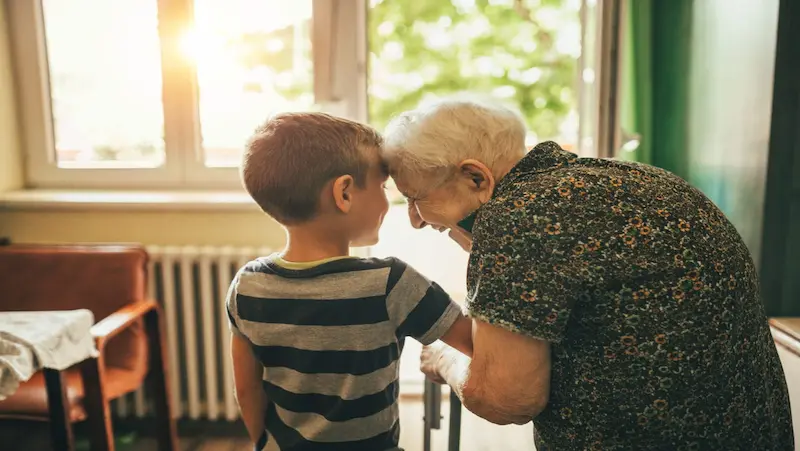
Conclusion
Teaching good manners to children is a vital investment in their personal development and future success. By emphasizing the importance of good manners in personal relationships, social interactions, and various aspects of life, parents can guide their children toward becoming respectful, considerate individuals.
Incorporating practical tips and techniques, integrating manners into daily routines, and fostering a positive and nurturing environment all contribute to their learning. Furthermore, collaboration between parents, teachers, and the larger community creates a unified approach, reinforcing the values of good manners across different settings.
Together, we can empower children with the skills and attitudes necessary to navigate the world with grace, kindness, and respect.
To get your hands on more such educational and free resources on coding, robotics, game development, etc., do check out the Brightchamps Blog Page now!
Elevate your child’s learning journey with BrightChamps, the leading EdTech company redefining education. Our innovative blend of robotics, financial education, and coding courses equips young minds with skills for a lifetime.
Frequently Asked Questions
Teaching good manners to kids is important as it helps them develop respectful and considerate behavior, build positive relationships, navigate social situations with ease, and prepare for future success in various aspects of life.
If you want to teach your kid good manners, you have to behave nicely with your family or others because what kids can observe, they imitate the replica of it.
School is a second home for every kid because they spend a maximum amount of time when they are growing. School is equally responsible for teaching values to kids like- equality, unity, knowledge, and friendship.
Some essential manners to teach children include saying “please” and “thank you,” being respectful, practicing good hygiene, using good table manners, and being considerate of others.
Encourage your child to use good manners in different situations by consistently modeling them, providing gentle reminders, offering positive reinforcement, and discussing the importance of respectful and considerate behavior.
If your child resists learning good manners, try explaining the reasons behind them, making it fun and engaging, providing consistent reminders, and lead by example to encourage their adoption and understanding.
In challenging social situations, calmly remind your child of the expected manners, guide them on appropriate behavior, and debrief afterward to address any areas for improvement while reinforcing positive choices.
Involve the community in promoting good manners for children by collaborating with local organizations, businesses, and religious institutions to provide workshops, guest speakers, and events focused on manners and etiquette.

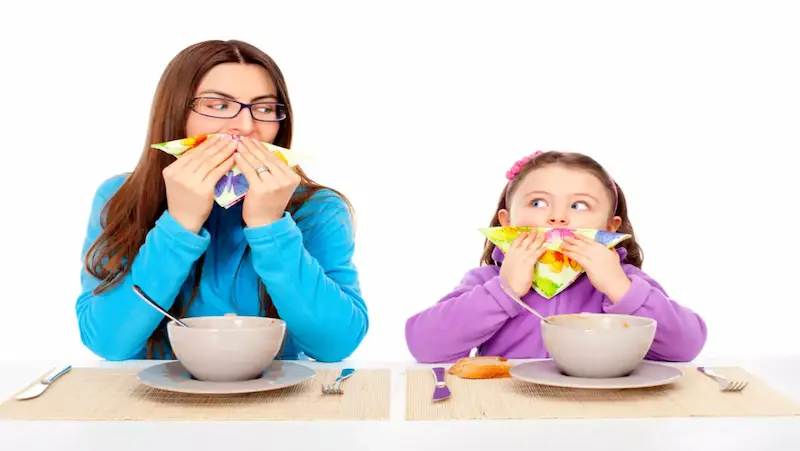
 We are an army of educators and passionate learners from BrightChamps family, committed to providing free learning resources to kids, parents & students.
We are an army of educators and passionate learners from BrightChamps family, committed to providing free learning resources to kids, parents & students.











